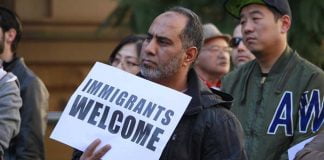Nelson Mandela’s South Africa did not live up to the hopes of freedom and equality that drove the struggle against apartheid, argues James Supple
Nelson’s Mandela death in December was a time to remember the powerful struggle that brought down the racist apartheid regime in South Africa. Yet amidst the celebrations of Mandela’s life, it was largely ignored that the South Africa he left behind has failed to live up to hopes of an end to poverty and oppression for the black majority.
Mandela led the African National Congress (ANC) to power in 1994, becoming the country’s first black president. His party has governed the country ever since. Now, however, the ANC faces a growing crisis, with massive disappointment and anger amongst its supporters about the lack of change.
This was powerfully demonstrated at Mandela’s memorial in Johannesburg when current ANC leader and South African President Jacob Zuma was booed by the crowd of tens and thousands.
Zuma wrested the ANC leadership from Mandela’s successor Thabo Mbeki in 2007 with the backing of trade unions and the left of the ANC. He presented himself as a break with the pro-business approach of Mbeki, famously singing anti-apartheid song Umshini Wami (Bring Me My Machine Gun) to associate himself with the hopes of the anti-apartheid struggle. But his policies in power have been little different.
The ANC has enjoyed the backing of the trade unions through the peak union body COSATU since the anti-apartheid struggle. But at the end of last year the country’s largest union, the National Union of Metalworkers (NUMSA), decided to end its support and financial backing for the ANC. Justifying their stance, they said in a statement, “Swelling the ranks has merely resulted in delivering more working class victims, like lambs to the slaughter by the ANC’s bourgeois leadership.” The union’s conference, attended by 1200 delegates representing 338,000 members, also issued a call to set up a new workers’ party.
There is also pressure on the ANC’s left, from a new party called the Economic Freedom Fighters, set up by the former ANC youth wing leader Julius Malema, who was expelled from the party. He has called for nationalisation of the mines and redistributing white-owned farmland to blacks without compensation.
Unequal
The reasons for discontent with the ANC are obvious. Unemployment has almost doubled since the ANC came to power to a shocking 25 per cent, or 35 per cent if those who have given up looking for work are included.
Inequality has also increased, with the country now rated as the most unequal in the world. From 1993 to 2008 the income share of the top 10 per cent grew from 54 to 58 per cent, while the bottom 50 per cent dropped from 8.3 to 7.8 per cent of income.
The number of blacks in poverty sits at 42 per cent, while for whites it is just 1 per cent. On average whites still earn six times more than blacks, according to the 2012 census. And almost 18 per cent of the population is infected with HIV—6.1 million people.
One of the starkest problems is housing. Although the ANC claims that 3.3 million low cost houses have been built since 1994, this has failed to keep pace with population growth. There are still 2.1 million people waiting for housing. Shanty towns continue to mushroom on the fringes of the major cities, housing an estimated 25 per cent of the population in the largest cities.
Access to services like piped water and electricity has increased as a result of government spending. But charges have risen as a result of privatisation and outsourcing, meaning increasing disconnections. In Durban water prices doubled between 1998 and 2004, leading to a sharp decline in water use by the poor. Local communities have resisted by illegally reconnecting power and water services.
Compromise
This abject failure to improve the lives of the vast majority of the black population is a direct result of the ANC’s decision to accept a negotiated transition from Apartheid with the old white the ruling class. Rather than challenge capitalism, the ANC agreed to run it.
Instead of a redistribution of the country’s wealth, the transition, “allowed whites to keep the best land, the mines, manufacturing plants and financial institutions, and to export vast quantities of capital”, as South African academic Patrick Bond put it.
The ANC abandoned its former commitment that “the people shall share in the country’s wealth” spelt out in its 1955 Freedom Charter. This promised “nationalisation of the mineral wealth beneath the soil, the banks and monopoly industry”. Upon taking power the ANC instead insisted that there could only be “redistribution through growth”. This was a classic neo-liberal strategy that assumed if the government promoted economic growth and higher profits for big business, the benefits would trickle down to the majority.
Mandela and the alliance of the ANC, COSATU and South African Communist Party (SACP) agreed to keep the workers’ movement under control and hose down expectations of change.
Mandela declared early on that, “We must rid ourselves of the culture of entitlement which leads to the expectation that the government must promptly deliver whatever it is that we demand.”
In an effort to reassure investors, Mandela even retained the old white ruling party’s Finance Minister in his first government. It adopted a new economic strategy, GEAR, based on government spending cuts and attracting foreign investment through business tax cuts and privatisation.
The new government forced through a series of cuts to corporate tax, from 48 per cent in 1994 to 30 per cent by 1999.
Two stages
The ANC was always a middle class, nationalist organisation whose aim was “the development of a prosperous, non-European bourgeois class”, as Mandela put it. It was opposed to a socialist transformation to put working class people in power, instead aiming to establish black-run capitalism in South Africa.
Yet the movement against apartheid, and the black workers’ movement in particular, had the potential to mount a challenge to capitalism itself and to seize control of the wealth from the hands of the white minority. The end of the 1970s saw new independent black unions emerge and win legal recognition. By the 1980s workers were organising co-ordinated general strikes, increasing in number from four in 1984 to 22 in 1985 and 26 in 1986. The largest ever strike by four million workers shut down the country in August 1992.
The Apartheid economy had become increasingly reliant on the labour of black workers to function.
But the ANC, the South African Communist Party (SACP) and COSATU held back working class struggles in favour of negotiations with the regime for democratic reforms. The ANC, in order for the negotiations to succeed, had to show to international investors and the whites who held the levers of economic power in South Africa that they could restore capitalist stability through bringing the strike movement to an end.
In his autobiography Mandela admits that in 1992, after attending a mass demonstration of 200,000 people held in response to the murder of 46 ANC activists in Boipatong, he drew the conclusion that “it was time to cool things down” after seeing banners declaring “Mandela give us guns” and “Victory through battle not talk”.
A year later when SACP leader Chris Hani was assassinated in 1993, Mandela called for calm, saying “we must not permit ourselves to be provoked” and attempting to slow down the mobilisation and protests.
The issue for Mandela, however, was not really violence, but the threat of a genuine, socialist revolution in South Africa.
This strategy of negotiations was justified by adherence to a two-stage theory of revolution. According to the SACP, South Africa’s white minority Apartheid regime was a “colonialism of a special type”. They argued that a “national democratic revolution” and a long period of economic growth would be necessary before there was any prospect of a socialist revolution.
This idea was a product of the SACP’s Stalinist politics, and the rejection of the experience of the Russian Revolution, which had shown the possibility of workers taking power in an underdeveloped country.
The Russian revolutionary Leon Trotsky had spelled out how workers could pursue a strategy of permanent revolution, moving straight from dictatorship to workers’ power without any extended intermediate stage.
There were some within the workers’ movement who did reject the national democratic alliance, rightly arguing that it meant subordinating workers’ interests. This “workerist” current argued that workers’ struggle for higher wages and conditions should remain primary. But they failed to put forward an alternative political strategy for the struggle against the Apartheid regime, such as advocating workers’ control.
Beneficiaries
In the end, the main beneficiaries of the end of apartheid has been a small new black elite. Many of them have come from the ranks of the ANC leadership, now able to benefit from the spoils of office.
A stark example is Cyril Ramaphosa, current Deputy President of the ANC and a former mine union leader, who presided over Mandela’s memorial. He has become a multi-millionaire worth $675 million, and owner of the South African McDonalds franchise, on top of his interests in the Lonmin mining company that runs the Marikana mine.
President Zuma has recently been caught out in a corruption scandal of his own, with $22 million of public money spent on renovations to his private home, including a new swimming pool and private amphitheatre.
But the working class in South Africa is once again beginning to move.
Strikes and protests have been growing since 2012, symbolised by the Marikana mine workers strike.
At Marikana, the ANC may have directly collaborated with union officials, employers and police in an operation to break the strike by shooting 34 workers dead.
But Marikana has encouraged a succession of wildcat strikes, taken without legal protection and often without consulting union officials. Since 2006, unrest and demonstrations in black townships has been on the rise, as mostly unemployed workers demand adequate sanitation, electricity and water.
This renewed strike and protest movement could be the seeds of a different future for black South Africans—one where the wealth is not controlled by a tiny elite, white or black, but by the working class.





